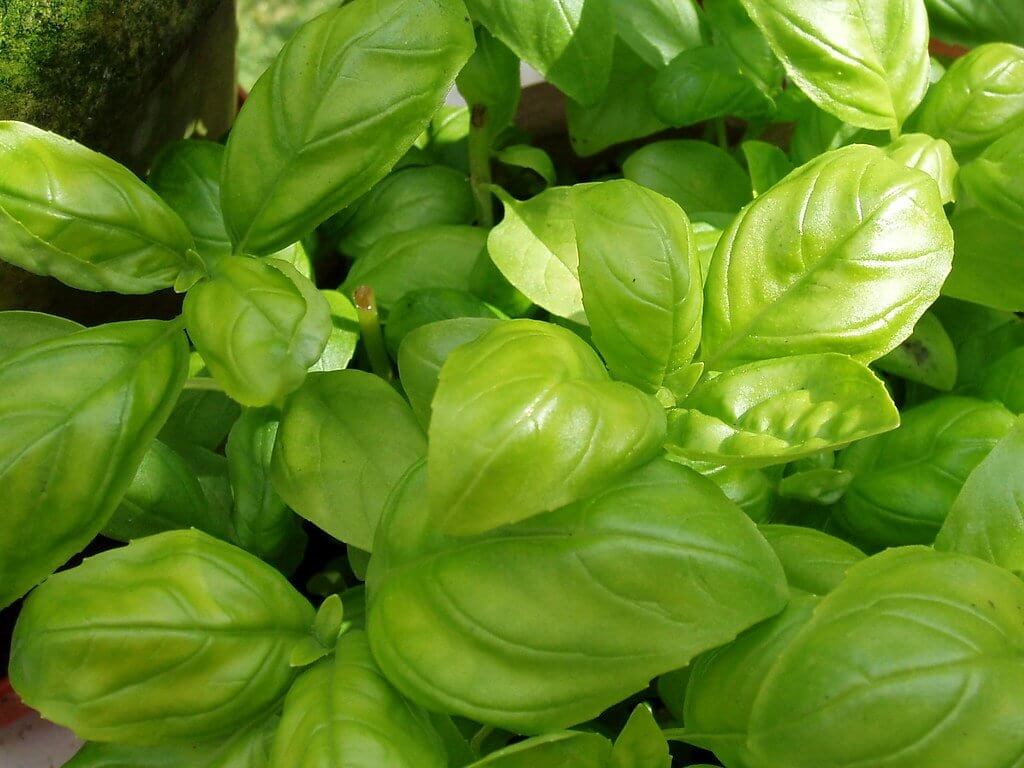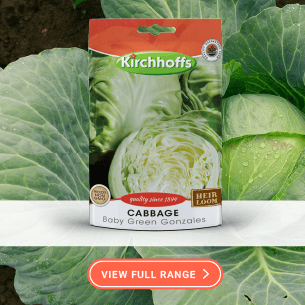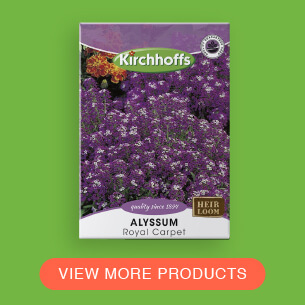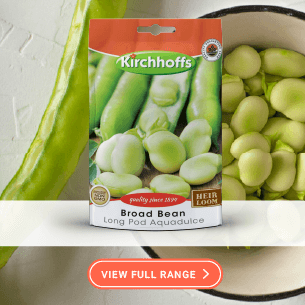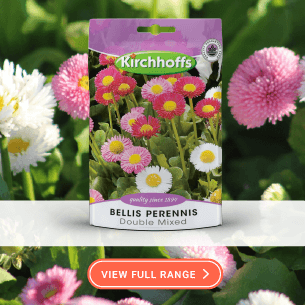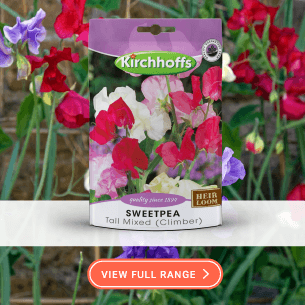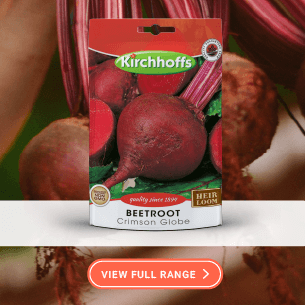How to Grow Basil from Seed: A Comprehensive Guide
Introduction
Basil, a versatile and aromatic herb, is a staple in kitchens worldwide. If you’re wondering how to grow basil effectively, starting from seeds in trays is an excellent method. Ideal for early spring planting, this process allows you to manage seedlings more efficiently, especially for varieties that are sensitive to the unique South African climate. Whether it’s for garnishing your favorite dishes or enhancing your home garden, learning how to grow basil from seeds can be a fulfilling endeavor.
Choosing the Right Seeds
How to grow basil begins with selecting the right seeds. Here are some popular varieties avaliable in South Africa:
- Sweet Basil: A must-have for Italian cuisine lovers, Sweet Basil offers a classic, peppery flavor that complements a wide range of dishes.
- Purple Basil: This variety stands out with its deep purple leaves and a spicier taste, making it a visually stunning addition to any dish.
- Lemon Basil: For a fresh, citrusy twist in your recipes, Lemon Basil is the perfect choice with its lemony tang.
- Basil Blue Spice: This unique variety not only has an intriguing hint of vanilla and spice but also boasts striking blue flowers, adding beauty to your garden.
- Thai Basil: A key ingredient in Asian cuisine, Thai Basil is known for its robust licorice-like flavor and sturdy leaves.
- Basil Genovese: Pronounced ‘gen-o-VEH-zeh’, this classic pesto ingredient offers a strong, sweet flavor and is a garden staple.
- Interesting Basil Varieties:
- Licorice Basil: Adds a sweet, anise-like taste to your dishes with its distinct licorice flavor.
- Purple Ruffles Basil: Its frilly, dark purple leaves not only provide a mild, sweet flavor but also an ornamental appeal.
- Corsican Basil: A rare find, this variety has variegated leaves and a bold flavor, blending sweet and spicy notes.
- Cinnamon Basil: Known for its unique cinnamon scent, it adds a warm, spicy flavor to culinary creations.
- Clove-scented Basil: Ideal for adding depth to both sweet and savory dishes with its strong clove aroma.
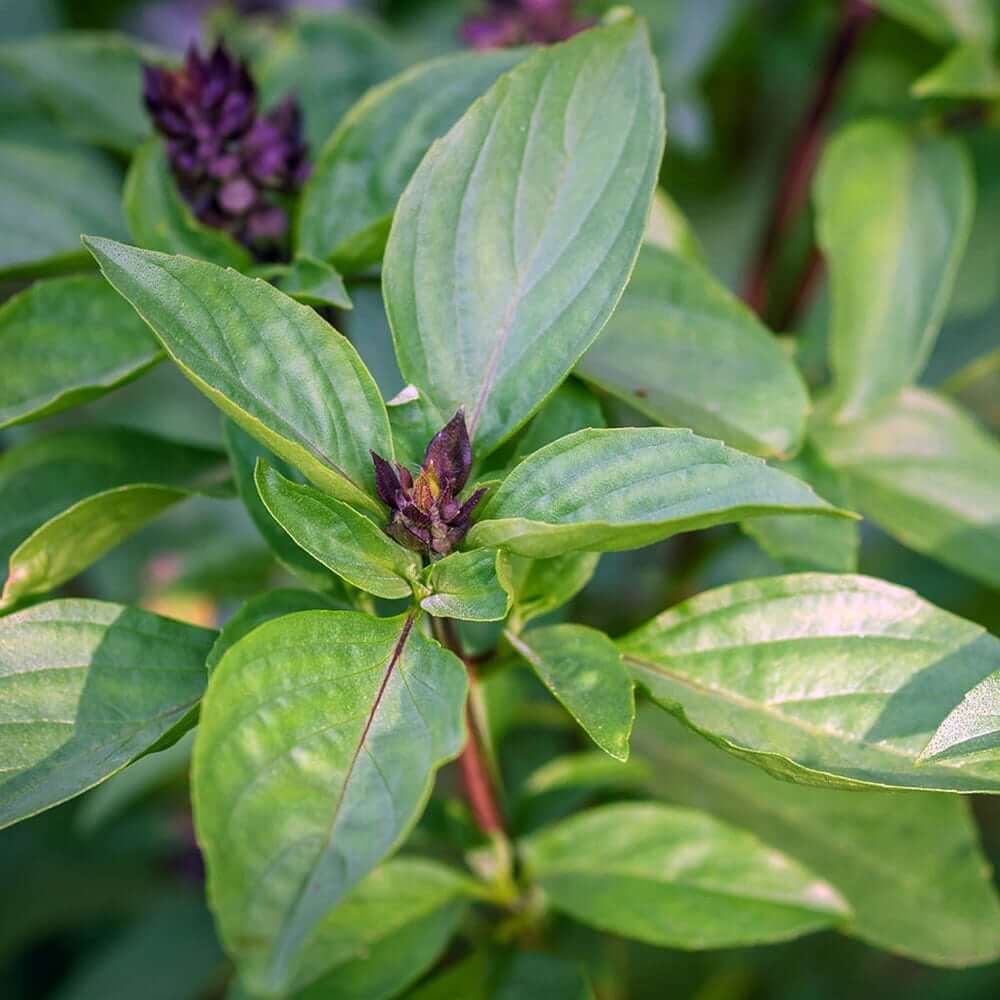
How to Plant Basil Seeds in Trays
To successfully learn how to grow basil in trays, follow these steps:
- Fill the Tray: Begin with a clean, empty tray as your foundation.
- Add Medium: Opt for a well-draining medium like coco peat, palm peat, or coir peat to provide the best start for your seeds.
- Water: Pre-water the medium to create a moist environment for the seeds.
- Sow Seeds: Evenly distribute the basil seeds across the tray.
- Label: If planting multiple varieties, label each section for easy identification.
- Cover: Use a cover like plastic or a mini greenhouse to simulate the ideal germination environment.
Caring for Basil Seedlings in Trays
The care you provide in the early stages is crucial for growing basil successfully:
- Watering: Ensure that seedlings receive gentle, consistent moisture without being overwatered.
- Sunlight: Rotate the trays regularly to give seedlings balanced exposure to sunlight, promoting even growth.
- Thinning: Once the true leaves develop, thin out the weaker seedlings to give the stronger ones more room to grow.
Transplanting to Garden or Larger Pots
When considering how to grow basil plants to their full potential, transplanting them correctly is key:
- Hardening Off: Gradually introduce the basil seedlings to outdoor conditions to acclimatize them.
- Transplant Carefully: Handle the seedlings gently to avoid damage to roots and stems during the transplant.
- Post-Transplant: After moving to a new location, ensure adequate watering and provide some initial shade.
Caring for Basil after Planting
Post-transplant care is just as important when growing basil:
- Light: Basil seedlings thrive in bright light, needing around 6 hours of sunlight daily.
- Watering: Keep the soil slightly moist, ensuring not to overwater.
- Temperature: Maintain a warm environment, ideally around 21°C.
- Soil: Use a high-quality, well-draining potting mix.
- Fertilizing: Begin fertilizing when several true leaves have formed, using a balanced liquid fertilizer.
- Pruning and Pinching: Encourage bushier growth by pinching off the top leaves.
- Pest and Disease Management: Monitor for pests like aphids and diseases such as mildew.
Harvesting Basil
To reap the benefits, follow these harvesting tips:
- Timing: Start harvesting when the plant reaches 15-20 cm in height.
- Method: Harvest the top leaves by cutting just above a pair of leaves.
- Care: Use sharp tools and be mindful not to over-harvest.
3 Top Tips for Tray Cultivation
Maximize your success with these top tips:
- Drainage: Ensure your trays have proper drainage to prevent root rot.
- Humidity Dome: Initially, a humidity dome can boost germination rates.
- Rotation: Regular rotation promotes uniform growth.
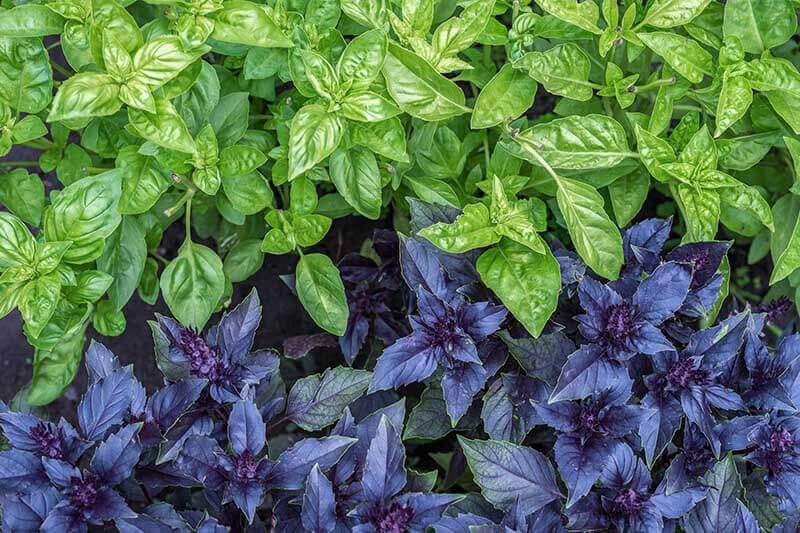
How to Grow Basil Q&A
Popular questions on how to grow basil:
How do you plant basil seeds in trays?
To plant basil seeds in trays, start by filling a seed tray with a good quality, well-draining seed starting mix. Scatter the basil seeds evenly over the surface, then lightly cover them with a thin layer of the mix. Basil seeds need warmth to germinate, so place the tray in a warm area and keep the soil moist but not waterlogged. Covering the tray with a plastic dome or wrap can help maintain humidity.
What is the best way to grow basil from seed?
The best way to grow basil from seed is to start them indoors in a seed tray or small pots. Use a high-quality seed starting mix, plant the seeds at a shallow depth, and maintain a consistent soil moisture level. Basil seeds germinate best at temperatures between 18°C to 25°C. Once seedlings emerge and grow their first set of true leaves, they can be thinned out or transplanted.
Should you soak basil seeds before planting?
Soaking basil seeds before planting is not necessary, but it can speed up germination. If you choose to soak them, place the seeds in a bowl of water for 12 to 24 hours before planting. This softens the seed coat and can help the seeds sprout more quickly.
How long does it take for basil seeds to fully grow?
Basil seeds typically germinate in 5 to 10 days under optimal conditions. The plants can take 3 to 4 weeks to become established, and they are usually ready for harvesting in 6 to 8 weeks after planting, depending on the variety and growing conditions.
Does basil need full sun?
Basil thrives in full sun and requires at least 6 to 8 hours of direct sunlight per day. However, in very hot climates, basil can benefit from afternoon shade to prevent wilting or leaf burn.
How do you encourage basil to grow?
To encourage basil to grow, provide it with full sun, regular watering, and well-draining soil. Fertilize it every 4-6 weeks with a balanced liquid fertilizer. Regular pruning is also crucial – pinch off the tips and flower buds to encourage bushier growth and prevent the plant from becoming leggy or bolting.
What makes basil grow faster?
Basil grows faster when provided with optimal growing conditions: full sun, consistent moisture, warm temperatures, and nutrient-rich soil. Using a balanced fertilizer regularly and ensuring good air circulation around the plants also promotes faster growth.
How often should you water basil?
Water basil when the top inch of soil feels dry to the touch. This usually equates to watering once every few days, depending on the climate and soil conditions. Avoid overwatering, as basil does not like to sit in waterlogged soil.
How often should you water basil seeds?
Basil seeds and seedlings need to be kept consistently moist but not waterlogged. Water them lightly every day or every other day, ensuring the soil is moist at all times until they germinate and become established.
How do I make my basil bushy?
To make basil bushy, regularly pinch off the tips of the plant and any flower buds that appear. This encourages the plant to produce more lateral branches, resulting in a fuller, bushier plant.
How do you keep basil from growing strong?
To keep basil strong, ensure it receives adequate sunlight, water, and nutrients. Avoid overwatering and overcrowding, and provide good air circulation. Pinch off flower buds to keep the plant focused on leaf production.
Why are my basil seedlings not growing?
Basil seedlings might not grow due to several reasons: lack of sufficient light, overwatering or underwatering, poor soil conditions, or too low temperatures. Ensure they have the right growing conditions and adjust care as necessary.
Why is basil so hard to grow?
Basil can be challenging to grow if its specific needs are not met, such as sufficient sunlight, warm temperatures, and consistent moisture. Pests, diseases, and poor soil conditions can also contribute to difficulties in growing basil.
Why is basil growing so slow?
Slow growth in basil is often due to inadequate sunlight, low temperatures, overwatering, or nutrient deficiencies. Ensure the plant is receiving enough light, warmth, and the right amount of water and nutrients.
Do basil seeds need dark to germinate?
Basil seeds do not specifically need darkness to germinate, but they should be lightly covered with soil. They require warmth and consistent moisture more than darkness for successful germination.
Can I plant basil seeds directly in soil?
Yes, basil seeds can be planted directly in the soil, especially in warm climates. Plant them in well-draining soil, in a spot that receives full sun, and keep the soil consistently moist until germination.
What is the best fertilizer for basil plants?
The best fertilizer for basil plants is a balanced, water-soluble fertilizer (like a 10-10-10 NPK formula) used every 4-6 weeks during the growing season. Compost or organic fertilizers are also good choices for providing nutrients.
Can I grow basil from cuttings?
Yes, basil can be easily propagated from cuttings. Take a 4-inch cutting from a healthy basil plant, remove the lower leaves, and place it in water until roots develop. Then, transplant the cutting into soil.
Conclusion
Understanding how to grow basil from seed in trays is a rewarding process that enhances your culinary and gardening experience. Share your progress and enjoy the flavors of freshly grown basil!
You’re now equipped with the knowledge of how to grow basil from seed in trays. Embrace this green journey, and remember, your garden is a source of joy and health. Happy planting and harvesting!








